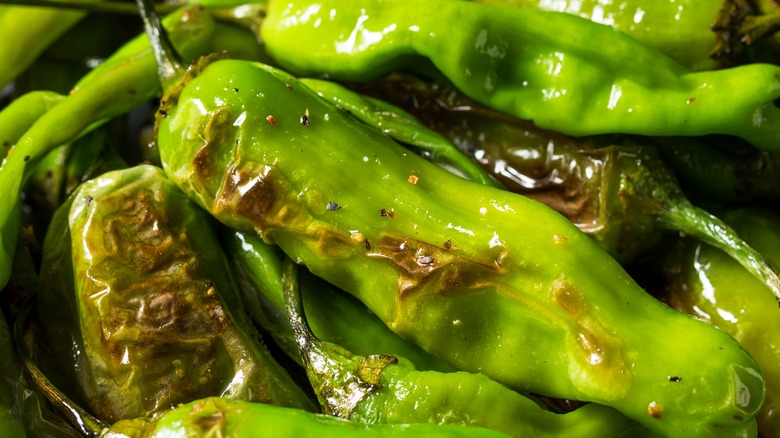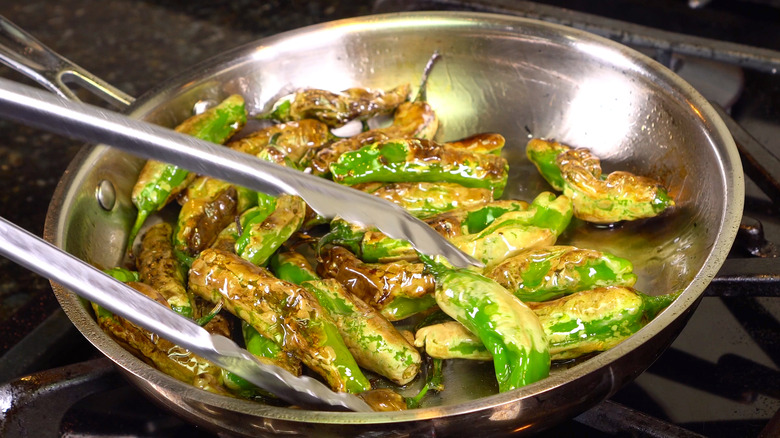What It Means To 'Blister' Your Vegetables
Who says vegetables have to be boring? All it takes is a little forethought to elevate raw broccoli, asparagus, and peppers into something far more exciting. While you can cook vegetables in a multitude of ways, roasting tends to be a go-to. This common way of preparing your produce requires little more than an oven, a knife, and a sheet pan. To maximize your output, try adding cornstarch, which makes roasted vegetables ultra-crispy. Similarly, the addition of vinegar boosts the flavor of standard veggies, resulting in a meal you'll want to savor.
However, there's another heat-based technique for cooking vegetables. Blistering your veggies is actually far simpler than roasting them — and doesn't require any cutting, slicing, or dicing prior to cooking. According to Real Simple, blistering is the best way to cook, crisp, and caramelize your favorite produce. And, it's the perfect technique for those days when using an oven is the last thing on your mind.
Blistering is a basic technique all home chefs should add to their arsenal
Ignore the name; Blistering is actually an appetizing — and efficient — way to cook your vegetables. According to Katom Restaurant Supply, blistering adds complexity to garnishes and side dishes. Plus, it's quick and low-effort: Simply heat olive oil in a skillet over medium-high heat. Once the pan heats up, add your vegetables and let them blacken. You can add salt, per Real Simple, or let the olive oil provide all of the flavoring.
Whatever you do, let your vegetables stay put. Blistering is all about getting a black coating on your produce. While it may be tempting to move your food around, Real Simple warns the most impatient of chefs to leave the skillet exactly as is.
As Katom Restaurant Supply advises, some recipes instruct you to rotate your vegetables so that they are blistering on all sides. The outlet also notes that peppers, broccoli, and tomatoes respond well to this process.
Soon enough, blistering will become a valuable tool in your rotation of cooking strategies.

